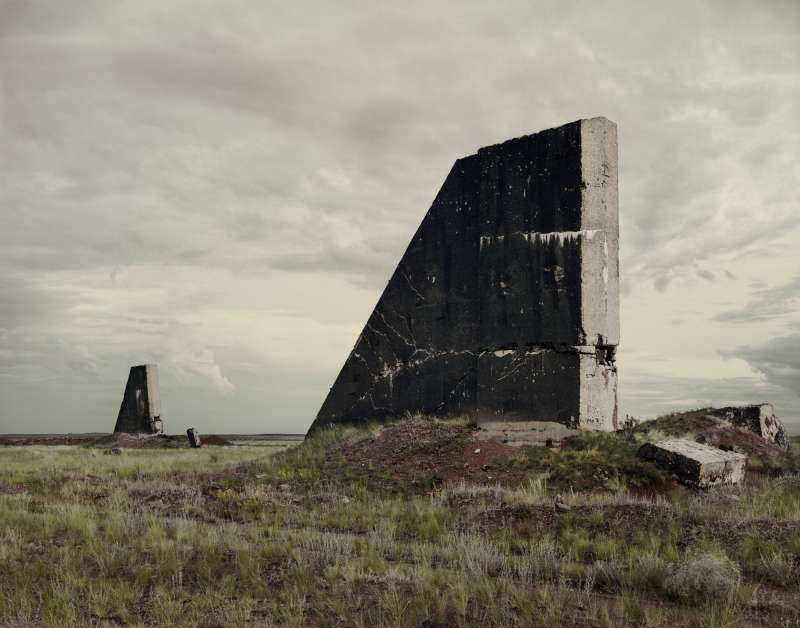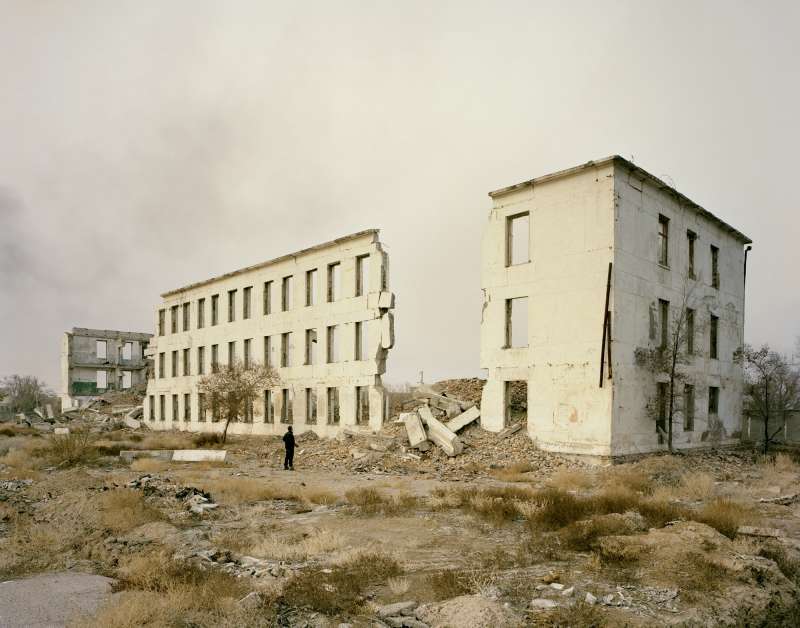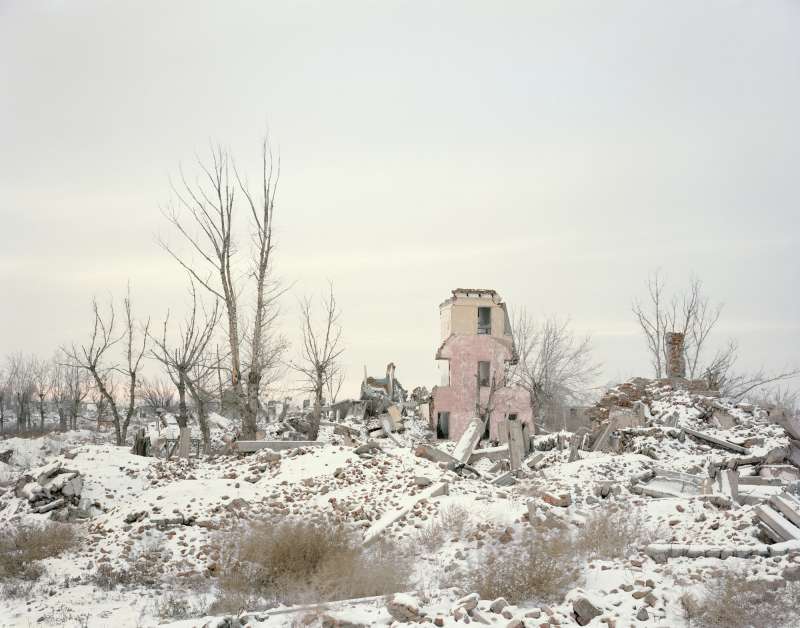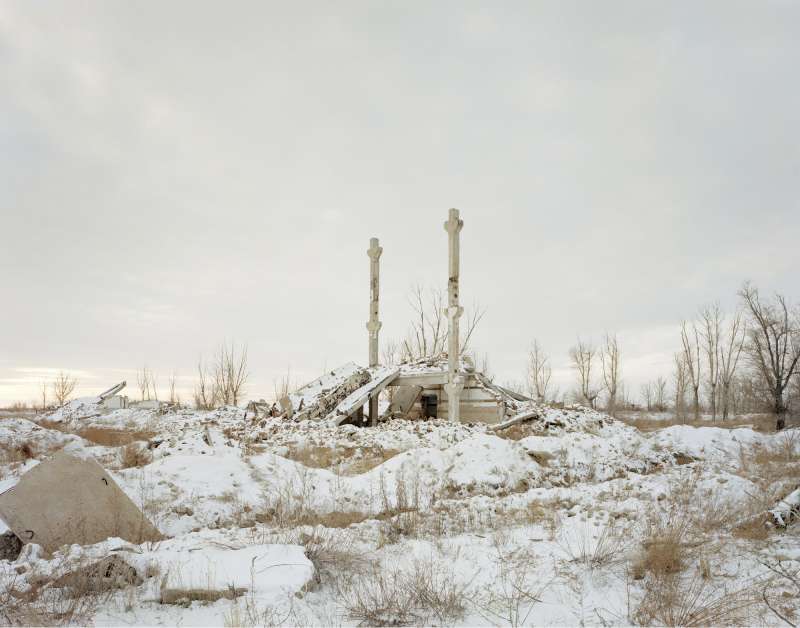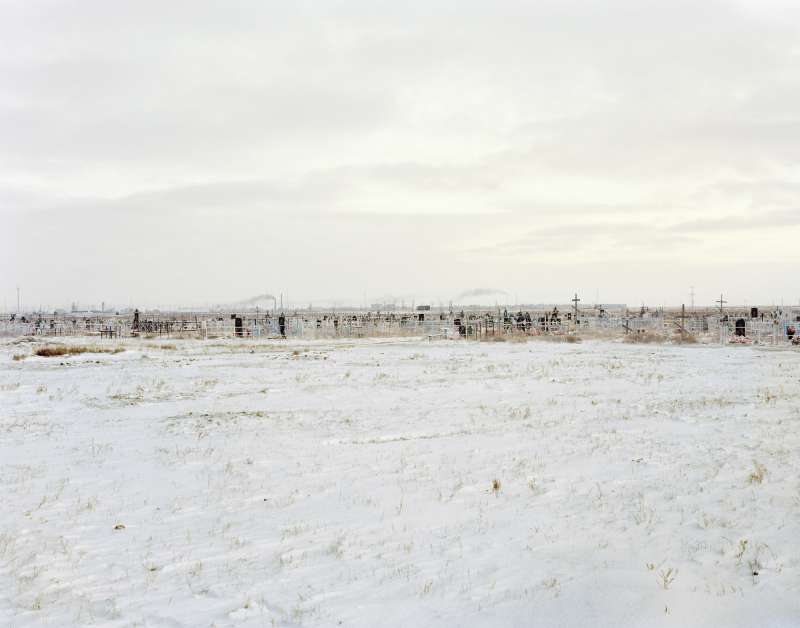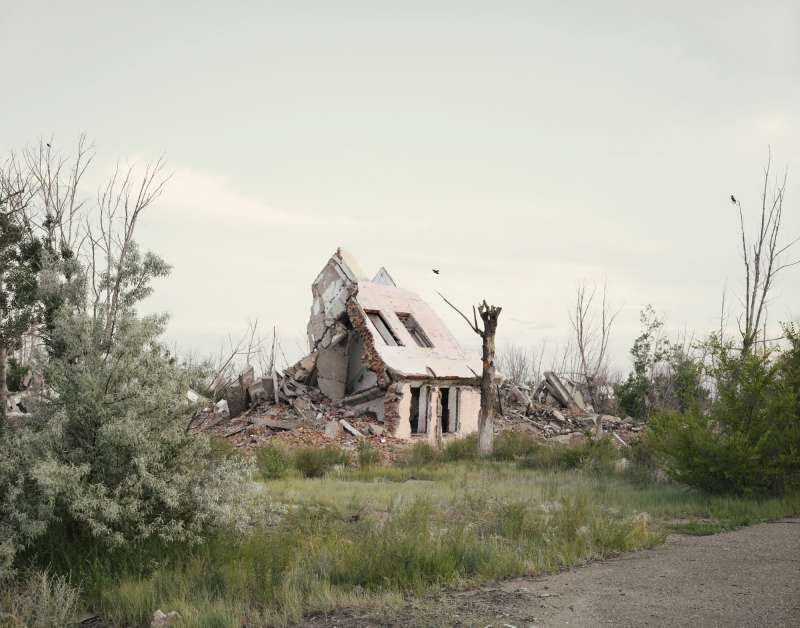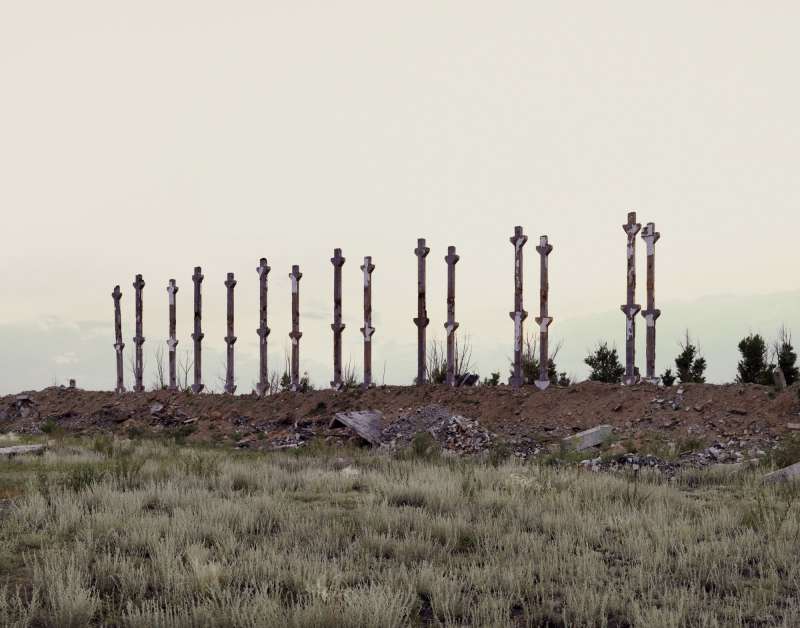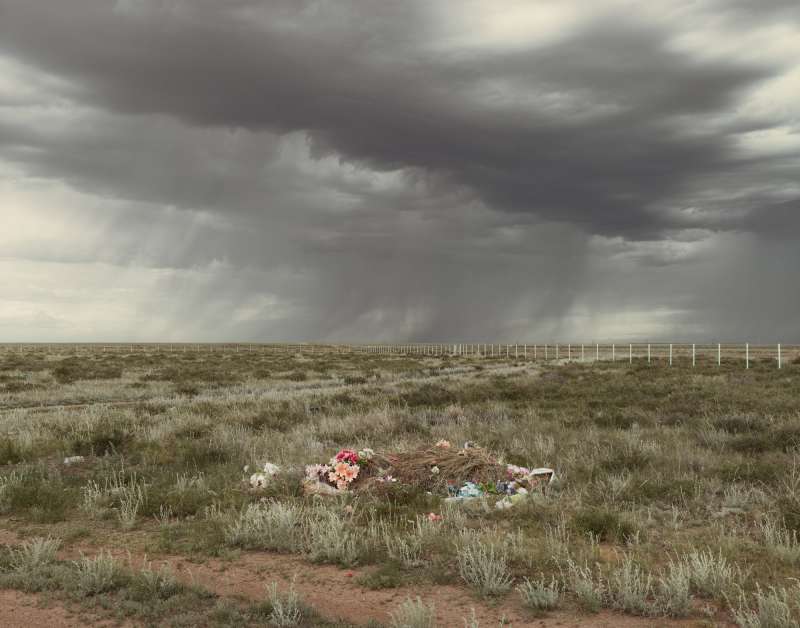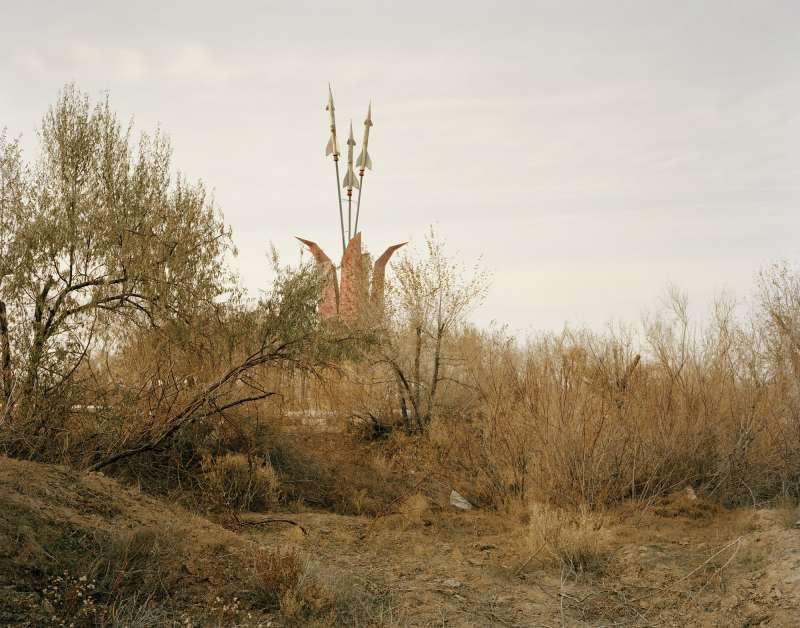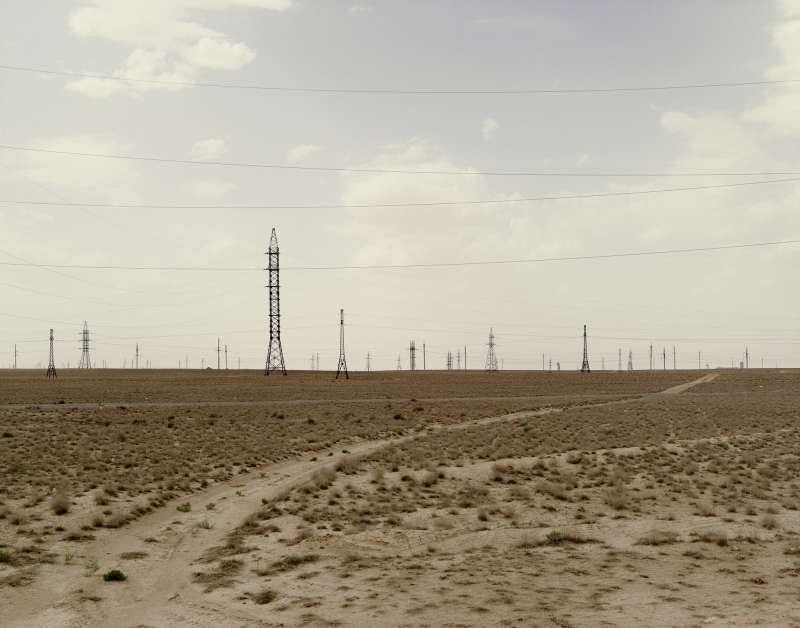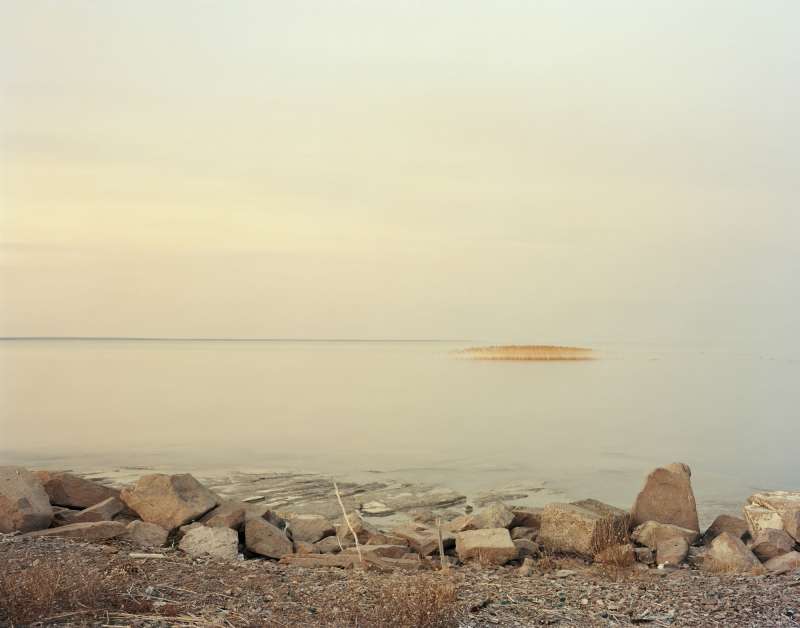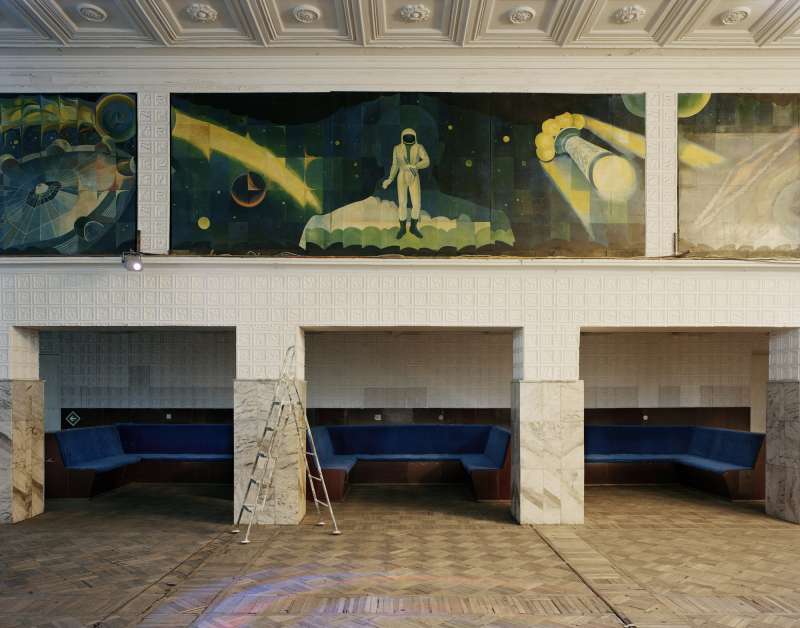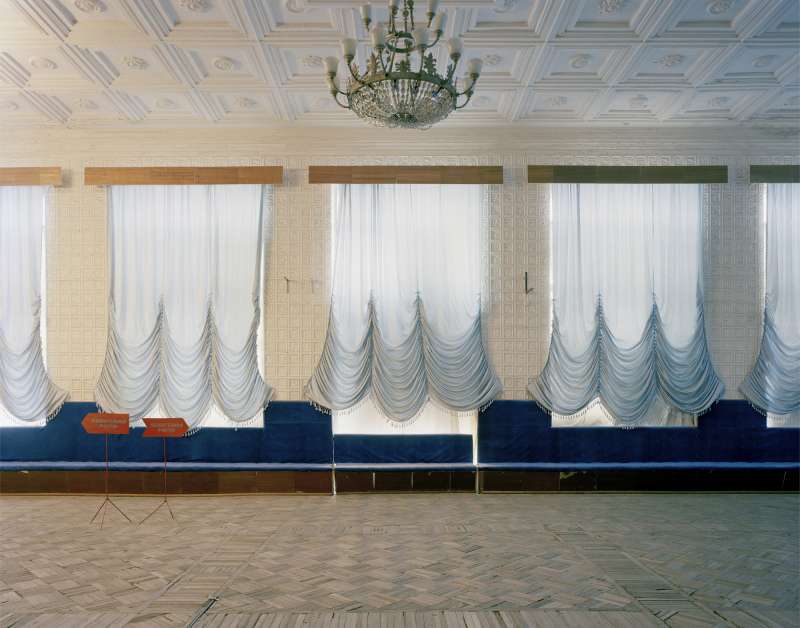‘I will show you fear in a handful of Dust’
T. S. Eliot, The Wasteland
The crows stand witness to the havoc wrought by mankind. Found in folklore and mythology the world over, the crow evokes a visceral response in me, a feeling of anxiety. They have long been associated with the dark side of the subconscious and the underworld, often considered a harbinger of death or bad fortune. Some believe that they bring messages from the divine, and others that they are our ancestors. I saw these crows as we approached the area known as The Polygon (an atomic test site). Their nests looked like blocked arteries in the trees. The only sign of life. As they circled above us, I felt a sense of brooding unease.
I later discovered that after each detonation in The Polygon there would be a flash, which would scare all the birds into flight, and the ensuing heat would burn their feathers. The Russians’ notes from these tests mention that hundreds of crows and other birds were burned alive. Some had their feathers singed and were no longer able to fly. They could be found squawking on the ground, drowned out only by the sounds of the tethered animals that were being monitored as they died. But despite this, the crows are still present.
‘No carrion will kill a crow. The crow is the indestructible bird who suffers everything, suffers nothing’. Ted Hughes
Dust
While researching large cities in Russia with a view to starting a photographic project, I came across two smaller towns that had been kept secret: Kurchatov and Priozersk (formerly known as Moscow 10). These places on the Russian-Kazakhstan border never appeared on any maps until Google Earth ‘discovered’ them. I was told that these towns were mostly destroyed. As with many secrets in life, this inspired my wish to know more, and I was propelled by that desire as well as an interest in the aesthetics of destruction. This fascination then took me from East Kazakhstan to the desolate Aral Sea.
Ruins conjure paradoxical emotions. We are at the same time frightened and mesmerised by destruction, as we are by death. And without being fully aware of what is pulling me, I am continually drawn to explore this theme; the darker side of our nature, of mankind. I find the ruin, in its many guises, beautiful, as have many artists before me. But it is the combination of beauty and destruction, beauty and melancholy, that really attracts me. When these two things come together, something happens, regardless whether I am working with people or landscapes. I do not fully understand it. I see space in my work; I think of a wide expanse, and I begin to see things in the periphery of my vision. As if I am falling into my subconscious. I find it hard to find the words to describe or fully grasp this feeling, but I know that when a recipe combining these two elements comes together, something more is created; a mixture of beauty and truth. This is what I am searching for in my work.
The Cold War and the relentless quest for nuclear armaments created many of the ruins that we see here, and they now stand as monuments to the near ruin of mankind. I wonder, when does a ruin become aesthetic? Must nature first soften the brickwork? Ruins hold within them the layers of time. But at what point does the newly destroyed become a ruin of the past?
When you are there, these places seem empty and silent. I was photographing destroyed landscapes without any clue as to how inhospitable they were to man—apart from the white overalls we had to wear. The Geiger counters brought from the UK chattered away on our belts, keeping us from the worst of the invisible dangers. As I pondered these burnt and fallen ruins—edifices that had been built specifically to test how much they could stand—I was reminded of Albert Speer’s notion of ‘ruin value’, the idea that buildings should be designed to eventually fall into aesthetically pleasing ruins, demonstrating to future onlookers the might of previous generations. When Sir John Soane designed the Bank of England, he presented the governors with three oil sketches, the third of which showed how beautiful the building would look in ruins—a thousand years onward. I wonder how the ruins we see here on these pages will speak to future generations.
Nadav Kander, 2012
Dust
Dust



